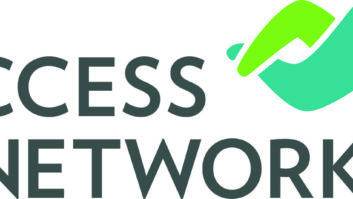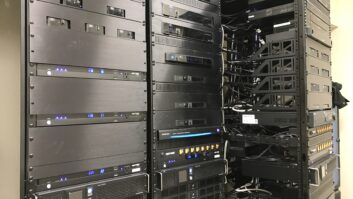Don’t worry, this isn’t another post about your lack of RMR strategy.
Installing managed services systems in client homes can save truck rolls and non-billable time. If you’re trying to achieve 25 billable hours per week for each of your employees, then troubleshooting, upgrading, and fixing your client systems remotely can go a long way to gaining an extra few hours worth of employee productivity.

ThinkStock Image
Managed service systems come in different flavors. The most popular approach in the residential space is the addition of a small appliance installed in the rack connected to the cloud and managed by a service provider (like Ihiji, OvrC, or Domotz Pro). The appliance manages anything connected to the IP network and, in many cases, can manage devices connected via wireless technologies like Z-wave or Bluetooth Low Energy. The dealer pays a subscription for the service and ideally marks it up and sells it to the client as part of a service plan (ours is detailed here: http://www.getlivewire.com/service/invision/). The best managed services platforms have databases with profiles for all the manufacturers we work with, making it easy to add lighting control, power supplies, wireless access points, home theater, and multi-room audio/video gear.
With the introduction of some new players into the managed services space over the past few months, we’re finally starting to see some movement toward further innovation. Ihiji (a product we use) has ruled the roost for the past few years, and they now have some new competitors to contend with. We’ve been begging Ihiji for a phone/tablet app for three years (something that doesn’t appear in their roadmap according to sources close to the company). The app request came from our experience with SnapAV’s product, OvrC, which supports only SnapAV-branded gear (SnapAV will soon be supporting third-party manufacturers with its own appliance later this year). Domotz (what a name!) just acquired Fing, an integrator mainstay app for network scanning, in mid-May and simultaneously announced its own managed services platform for the home with a unique twist; instead of running on a proprietary hub, it can run on a NAS or Raspberry Pi, and it’s only $2.99 monthly per home.
Does Domotz Pro do everything Ihiji or OvrC can do? No, but there are some great lessons learned from our experience installing these systems over the past few years. Here are the key features we’ve found are a must have for any managed services platform (as well as some wishlist items):
Ihiji InvisionOvrC HubDomotz Pro Notifications (ideally via text, email and push) Yes (No Push)Yes YesApp for iOS/Android No Yes YesTunneling (ability to access local resources from anywhere) Yes To Be Determined (TBD)YesUp/down notifications Yes YesYes Reboot capability Yes YesYes Granular Permissions Yes YesYes Reporting
Yes TBD Yes Manages Customer Service Plans (ticketing) Yes No No Self Healing No No No Adaptive No No No Pricing $250 annually (different plans available) TBD $2.99 monthly
We’re quickly moving to a place where our systems need to not only tell us that something is wrong, but also fix the problem for us. In the interim, there’s a fantastic opportunity to get involved in managed services.
Take advantage of 2016 and the pre-AI world we live in. For the foreseeable future, our systems will become more proactive, but most of the time, it will be incumbent upon the integrator to take action on the notification. We created Network Operations Center (NOC) for our company, where we can see all our managed services customers on a map and easily identify any issues. It has completely changed our relationship with customers from reactive to proactive. Letting a client know you fixed an issue before they knew about it is a huge coup.
Our challenge implementing managed services across a wider swath of our clients has boiled down to price. IP controllable power, managed services appliances and other gear add up, meaning we mostly sell our Invision subscriptions to clients with 2 or more subsystems installed (mostly jobs over $25,000). With the advent of the OvrC hub and Domotz Pro, we can market managed services to everyone with a tiered approach. I’m excited to see how our new plans work and would love to see your managed services successes and failures shared in the comments.
Stay frosty and see you in the field.







